- Home
- Japan Private Tours
- Shirakawa-go Private Tours
Discover Shirakawa-go: Best Things to Do and Travel Itinerary
Shirakawa-go is a breathtaking village in Japan, famous for its unique thatched-roof houses and beautiful natural surroundings. Recognized as a UNESCO World Heritage site, Shirakawago offers visitors a glimpse into traditional rural life and architecture that has been preserved for centuries. Whether you’re curious about things to do in Shirakawago or looking to create the ideal Shirakawago itinerary, this guide covers the best attractions, local experiences, and travel tips to help you fully enjoy your visit. From seasonal festivals to scenic viewpoints, Shirakawa-go is a must-see destination for travelers seeking authentic Japanese culture and stunning landscapes.
Private Tours & Sightseeing Shirakawa-go
Discover Shirakawa-go Your Way: Private Tours & Personalized Sightseeing Experiences
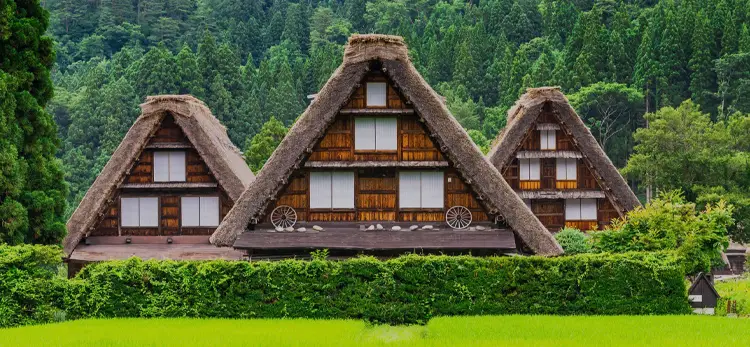
Shirakawago Private Tour (7 hours)
Shirakawago, Matsuri no Mori
Why Visit Shirakawa-go?

Welcome to Shirakawa-go, a picturesque mountain village nestled in the Japanese Alps, renowned for its unique gassho-zukuri farmhouses. Imagine stepping into a fairytale landscape of traditional thatched-roof houses, surrounded by serene rice paddies and breathtaking natural scenery that transforms with each season. This isn't just a visit; it's an immersion into a living history, offering a glimpse into Japan's rural past and a profound connection with nature.
- UNESCO World Heritage Site: Explore a remarkably preserved traditional village recognized for its cultural and historical significance.
- Unique Gassho-zukuri Architecture: Marvel at the distinctive "praying hands" roof structures, ingeniously designed to withstand heavy snowfall.
- Seasonal Splendor: Experience the village's enchanting beauty throughout the year, from lush greenery to vibrant autumn colors and a magical winter wonderland.
Quick Guide to Shirakawa-go
Ready to plan your visit to this enchanting village? Here’s what you need to know to get started.
Location & Access

Shirakawa-go is located in the remote mountainous region of Gifu Prefecture, in the heart of the Japanese Alps.
- From Kanazawa:
- By Highway Bus: Direct buses operate frequently from Kanazawa Station to Shirakawa-go (approx. 1 hour 15 minutes - 1 hour 30 minutes). Reservations are highly recommended.
- From Takayama:
- By Highway Bus: Direct buses also connect Takayama Nohi Bus Center to Shirakawa-go (approx. 50 minutes - 1 hour). Reservations are highly recommended.
- From Nagoya:
- By Train & Bus: Take the JR Limited Express Hida from Nagoya Station to Takayama Station (approx. 2 hours 30 minutes). Then, transfer to a highway bus from Takayama to Shirakawa-go (approx. 50 minutes - 1 hour). (JR Pass covers the train to Takayama)
Climate & Seasons

Shirakawa-go experiences four distinct and dramatic seasons, each painting the village in a unique light.
- Spring (March - May): Mild temperatures (average 10-20°C/50-68°F) with blooming flowers and the vibrant green of new rice seedlings. A refreshing time to visit. A light jacket is recommended.
- Summer (June - August): Warm and humid (average 20-28°C/68-82°F), with lush green rice paddies creating a picturesque landscape. Light clothing and insect repellent are advised.
- Autumn (September - November): Crisp and cool (average 10-15°C/50-59°F), renowned for its spectacular autumn foliage blanketing the surrounding mountains, typically from late October to mid-November. Layers are essential.
- Winter (December - February): Cold with very heavy snowfall (average -5 to 5°C/23-41°F), transforming the village into a magical winter wonderland. The snow-covered gassho-zukuri houses, often illuminated at night during specific periods, are a breathtaking sight. Warmest winter clothing, including waterproof outerwear and boots, is essential.
When is the best time to visit? Each season offers a unique charm. Winter for the iconic snow scenes (check illumination schedules in advance). Autumn for stunning foliage. Summer for the vibrant green rice paddies.
Explore the Heart of Shirakawa-go
The village itself is the main attraction, with its well-preserved farmhouses and surrounding natural beauty.
Ogimachi Village

- Highlights: The largest and most visited district in Shirakawa-go, home to the majority of the gassho-zukuri farmhouses. Wander through the village lanes, admiring these unique architectural wonders.
- Must-sees:
- Shiroyama Viewpoint: Offers panoramic views of the entire Ogimachi village, a must-do for capturing the iconic postcard image.
- Wada House: One of the largest and best-preserved gassho-zukuri houses, open to the public for a glimpse into traditional life.
- Kanda House: Another well-preserved farmhouse with informative displays about the gassho-zukuri construction.
- Nagase House: Features a collection of traditional farming and household tools.
- Myozenji Temple & Museum: A unique temple with a gassho-zukuri style bell tower and a museum showcasing local artifacts.
Gassho-zukuri Architecture
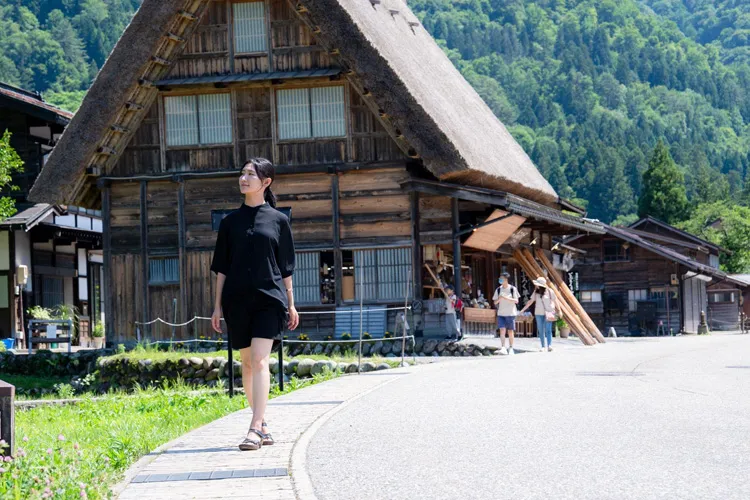
- Features: Characterized by their steep, thatched roofs resembling hands clasped in prayer, designed to shed heavy snowfall and provide a large attic space traditionally used for silkworm cultivation.
- Construction: Built with wooden beams and no nails, showcasing remarkable traditional carpentry techniques.
Experience Shirakawa-go
Beyond sightseeing, immerse yourself in the unique atmosphere and culture of this special place.
For History & Culture Enthusiasts
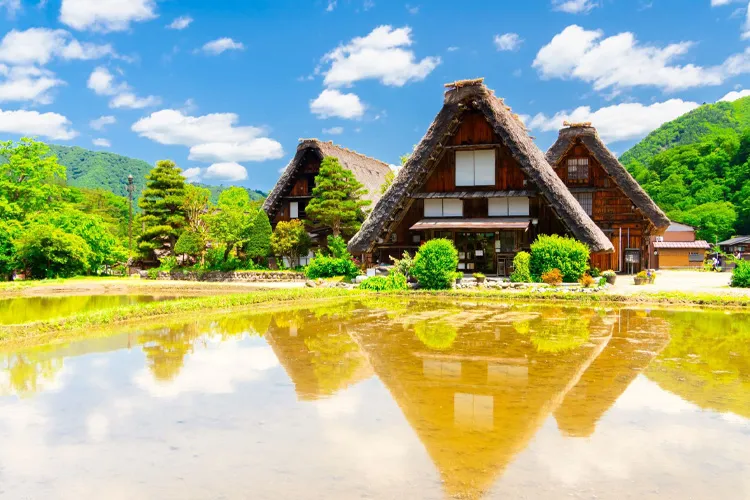
Step back in time and learn about the traditional way of life:
- Farmhouse Tours: Explore the interiors of the open gassho-zukuri houses to understand the living spaces, hearths, and the history of sericulture.
- Local Museums: Visit small museums within the village to learn about the architecture, farming practices, and local customs.
- Traditional Crafts: Look for local crafts and souvenirs, reflecting the region's heritage.
For Nature Lovers & Photographers
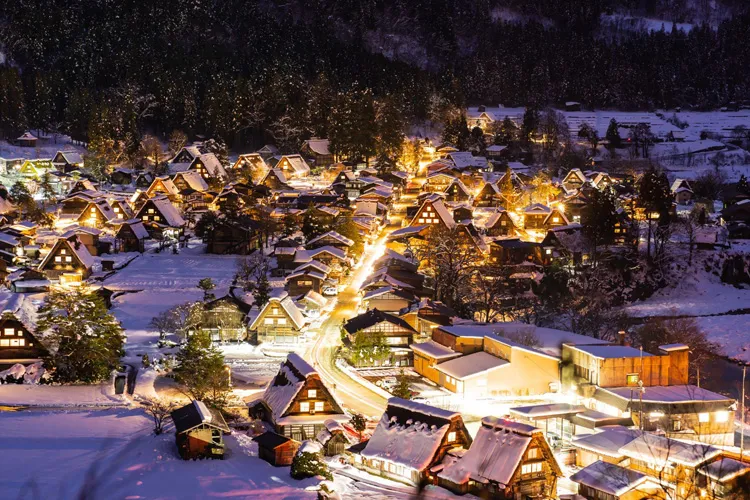
Capture the breathtaking beauty of Shirakawa-go and its surroundings:
- Panoramic Views: The Shiroyama Viewpoint is a must for capturing the entire village. Explore other viewpoints for different perspectives.
- Seasonal Landscapes: Each season offers unique photographic opportunities, from spring blossoms to autumn colors and the winter snowscape.
- Gassho-zukuri Details: Admire the intricate details of the thatched roofs and wooden structures.
- Surrounding Nature: Take walks around the village to appreciate the serene rice paddies and the beauty of the surrounding mountains.
For Relaxation
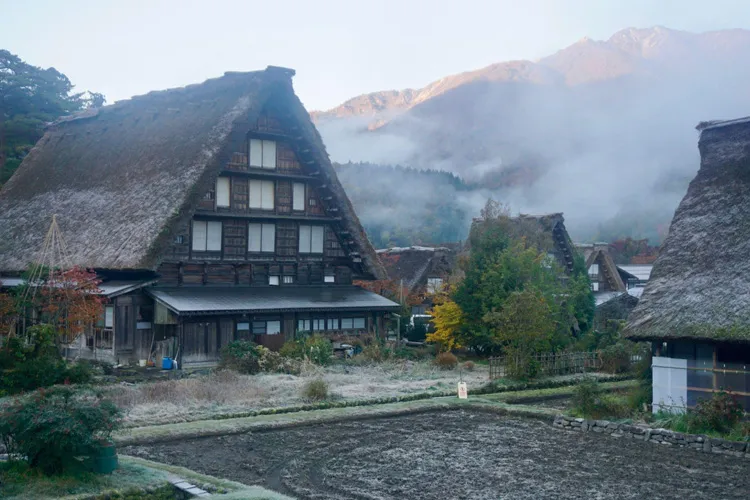
Enjoy the peaceful and tranquil atmosphere of this rural setting:
- Early Morning Walks: Experience the village in the quiet of the early morning before the crowds arrive.
- Riverside Strolls: Take a peaceful walk along the Shogawa River that flows through the valley.
- Guesthouse Stays: Consider staying overnight in a traditional gassho-zukuri guesthouse (minshuku) for an authentic experience and to soak in the village's tranquility after day-trippers leave.
Sample Shirakawa-go Itineraries
Need some inspiration? Here are a few suggested itineraries to help you plan your Shirakawa-go adventure.
Example 1: Shirakawa-go Day Trip (from Kanazawa or Takayama)
Focus: Iconic views and key farmhouse exploration
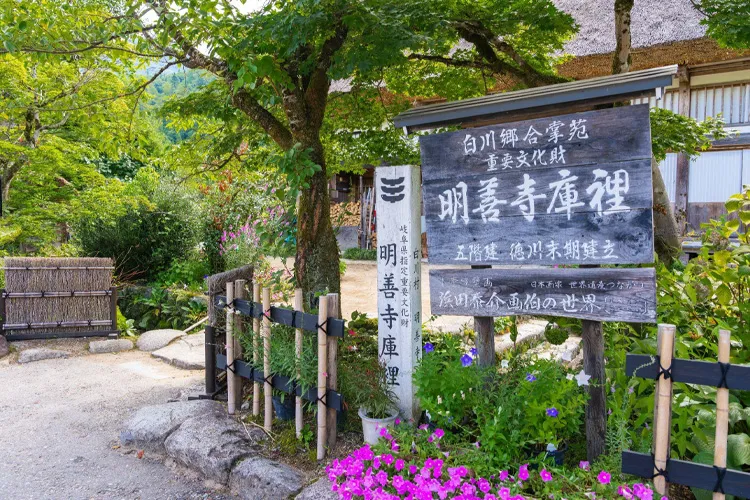
- Morning: ake a direct highway bus from Kanazawa or Takayama to Shirakawa-go Bus Terminal.
- Day: Walk to Ogimachi Village. Head straight to the Shiroyama Viewpoint for panoramic views. Explore the village on foot, visiting Wada House and one or two other open farmhouses (e.g., Kanda House, Nagase House). Enjoy lunch at a local restaurant.
- Afternoon: Explore the Myozenji Temple & Museum. Browse local souvenir shops.
- Late Afternoon: Take the highway bus back to Kanazawa or Takayama.
Example 2: Shirakawa-go Overnight Stay (from Takayama)
For a more immersive experience and to enjoy the village in the quieter evening/morning

- Day 1: Take a morning highway bus from Takayama to Shirakawa-go. Check into a gassho-zukuri minshuku. Explore Ogimachi Village (Shiroyama Viewpoint, Wada House, etc.) at your own pace. Enjoy dinner at your minshuku, often featuring local ingredients. Take an evening stroll through the village.
- Day 2 : Wake up early for a peaceful walk. Visit any remaining sites of interest. Enjoy breakfast at your minshuku. Depart Shirakawa-go by highway bus to your next destination (e.g., Kanazawa).
Example 3: Shirakawa-go in Winter (from Kanazawa or Takayama)
Experience the magical snowscape (check illumination schedules)
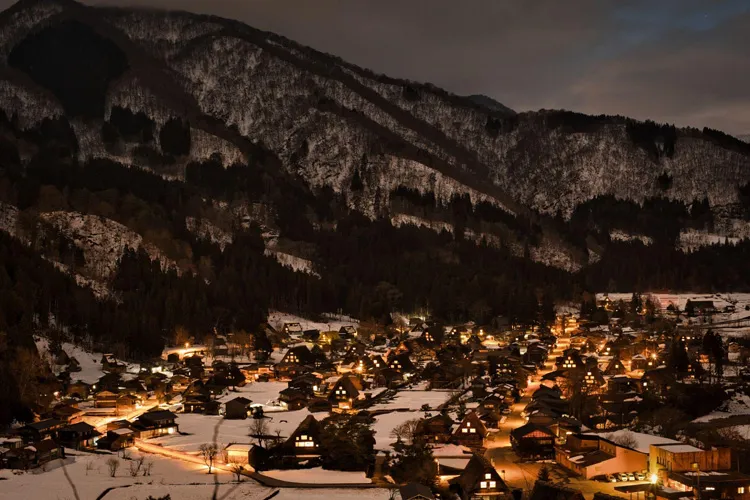
- Morning: Take a direct highway bus to Shirakawa-go. Dress very warmly! Head to the Shiroyama Viewpoint for stunning snow-covered views.
- Day: Explore the village, being mindful of icy conditions. Visit an open farmhouse. Enjoy a warm lunch. Check the schedule for any winter illuminations that might be happening in the evening. If staying overnight, secure accommodation well in advance.
- Evening (if applicable): Witness the magical illumination of the snow-covered gassho-zukuri houses.
- Next Morning: Depart Shirakawa-go.
Essential Travel Tips for Shirakawa-go

Make your visit to Shirakawa-go smooth and enjoyable with these practical tips.
Transportation
- Highway Buses: The most convenient way to reach Shirakawa-go from major nearby cities (Kanazawa, Takayama). Reservations are highly recommended, especially during peak seasons.
- Local Buses: Limited within the Shirakawa-go area. The main Ogimachi village is easily walkable.
Accommodation
- Gassho-zukuri Minshuku (Farmhouse Inns): Offers a unique and authentic experience. Book well in advance as they are limited.
- Hotels & Guesthouses: Some smaller options are available near the bus terminal and in surrounding areas.
Connectivity
- Free Wi-Fi: Limited within the village, mainly at the bus terminal and some restaurants/accommodations. Consider pocket Wi-Fi for reliable access.
Other Useful Information
- Comfortable Walking Shoes: Essential as you'll be doing a lot of walking on sometimes uneven paths.
- Layered Clothing: Recommended due to the mountainous location and varying temperatures, especially between seasons and day/night. Pack very warm clothing for winter.
- Cash is Useful: While some establishments may accept cards, many smaller shops and minshuku prefer cash.
- Respect Local Culture: Shirakawa-go is a living village. Be mindful of residents and their property.
- Heavy Snow in Winter: Be prepared for significant snowfall and icy conditions if visiting in winter. Check weather forecasts and road conditions in advance.
Shirakawa-go Travel FAQ
- Where is Shirakawa-go located? How can I get there?
- Shirakawa-go is a traditional village located in the mountainous northern part of Gifu Prefecture, Japan. It’s accessible from major cities like Nagoya, Toyama, and Osaka. Here are the main ways to get there:
- Bus: Direct highway buses run from Nagoya Station and Takayama Station to Shirakawa-go. It takes about 50 minutes from Takayama and around 2.5 hours from Nagoya.
- Car: You can drive and exit at the Shirakawa-go interchange on the Tokai-Hokuriku Expressway; it’s about a 10-minute drive from there. Renting a car is popular.
- Train + Bus: Take the JR Takayama Line to Takayama Station, then transfer to a bus to Shirakawa-go (about 50 minutes).
- What are the gassho-zukuri houses in Shirakawa-go? Can I enter them? Can I stay overnight?
- Gassho-zukuri is a traditional architectural style characterized by steeply pitched thatched roofs shaped like hands in prayer (“gassho”). This design helps withstand heavy snow in winter. Inside, you’ll find spacious wooden beams and an open layout typical of rural Japan.
- Many gassho-zukuri houses are open to visitors as folk museums or exhibitions where you can enter and explore.
- Some are operated as guesthouses where you can stay overnight and experience traditional village life. These are very popular, so booking ahead is essential.
- When is the best time to visit Shirakawa-go? What are the seasonal highlights?
-
- Spring (March to May): Cherry blossoms and fresh greenery create a beautiful, mild atmosphere perfect for sightseeing.
- Summer (June to August): Lush green landscapes and cool mountain air; traditional festivals also take place.
- Autumn (September to November): Stunning fall foliage colors the village in warm reds and golds — considered one of the best seasons to visit.
- Winter (December to February): The snow-covered village looks like a fairy tale scene. Special light-up events add a magical atmosphere. Be sure to prepare for cold weather.
- How long does it take to explore Shirakawa-go? Is a day trip enough?
- The main sights in Shirakawa-go are within walking distance, and it usually takes about 2 to 3 hours to tour the village at a relaxed pace. Including museums and observation points, spending half a day to a full day is ideal.
Day trips are possible, but if you want to enjoy the winter illuminations or a more leisurely experience, consider staying overnight. - What other attractions should I visit near Shirakawa-go?
- Takayama (Gifu Prefecture): A historic castle town with preserved old streets, about an hour by bus from Shirakawa-go. Great for traditional crafts and local cuisine.
- Hida Furukawa (Gifu Prefecture): A charming small town known for white-walled warehouses and koi-filled canals.
- Okuhida Onsen Area: About 1.5 hours by car from Shirakawa-go, this hot spring region offers relaxation surrounded by nature.
- Gokayama (Toyama Prefecture): Another UNESCO World Heritage site with traditional gassho-zukuri houses, quieter and less crowded than Shirakawa-go.

